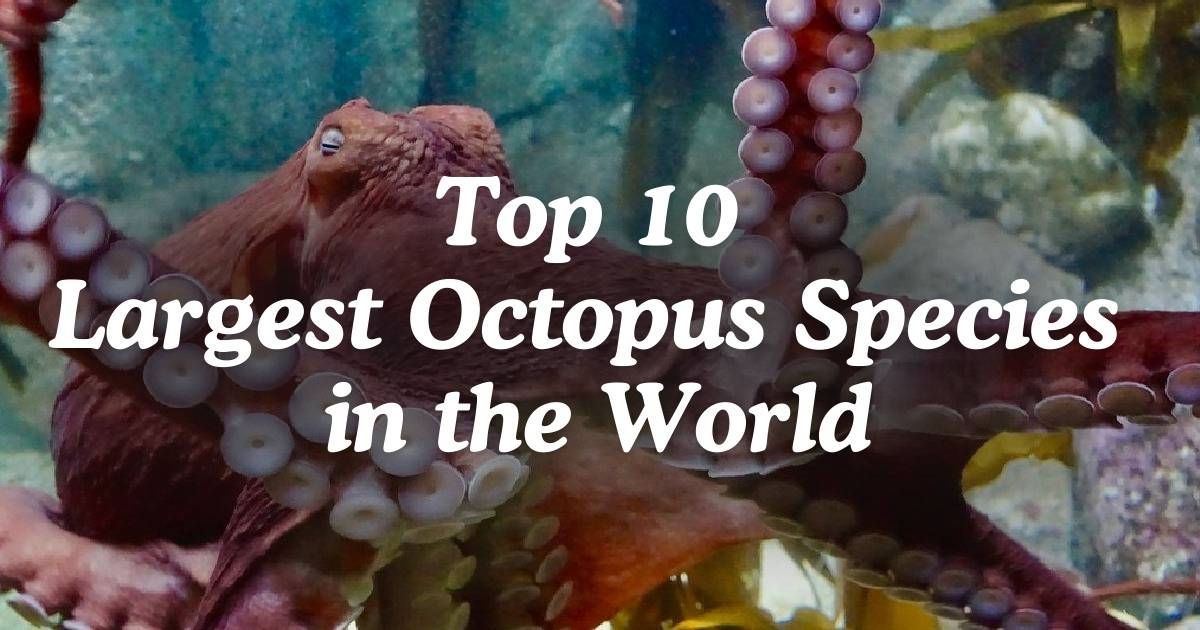Octopuses are among the most captivating creatures in the ocean, renowned for their intelligence, flexibility, and unique biology. Their eight arms, incredible camouflage abilities, and complex behaviors have fascinated scientists and ocean enthusiasts alike. Among the numerous species of octopuses, some stand out for their sheer size and remarkable adaptations. This article delves into the largest octopus species in the world, highlighting their size, weight, and key features. From the young octopus to the Giant Pacific Octopus, these marine giants represent some of the most intriguing life forms in the ocean’s depths.
10. Dumbo Octopus (Grimpoteuthis)
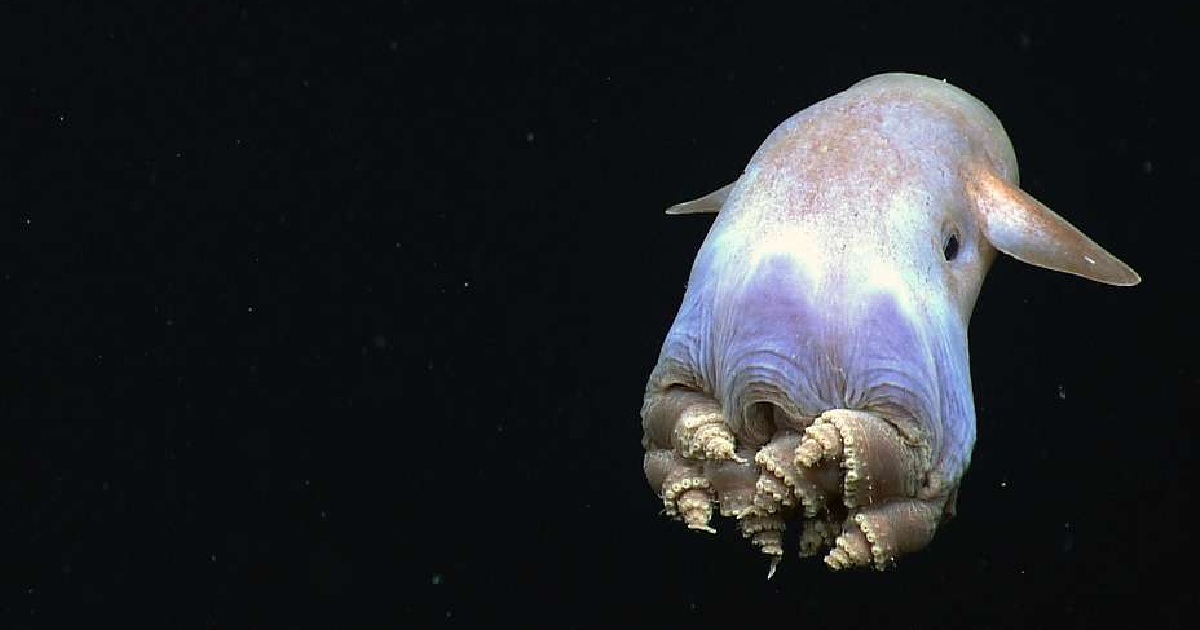
- Location: Deep sea, worldwide
- Weight: Up to 13 pounds (6 kg)
- Key Features: Flap-like fins resembling ears, deep-sea habitat, unique swimming method
For its distinctive ear-shaped fins, which appear like the Disney figure Dumbo, the Dumbo Octopus is an uncommon but intriguing species. The Pacific Ocean Dumbo Octopus dwells at depths of up to 13,000 feet, contradicting most of its larger kin. It is resistant to ocean pressures and cold due to its transparent body and rubbery composition.
Dumbo Octopuses glide gracefully utilizing their ear-like fins, unlike other octopuses that uses thrusting motion. They catch microscopic sea creatures with their woven arms, like crabs and worms, for consumption. Perhaps not the most massive octopus, but their submarine adaptations render them noteworthy.
9. Atlantic White Octopus (Vulcanoctopus hydrothermalis)
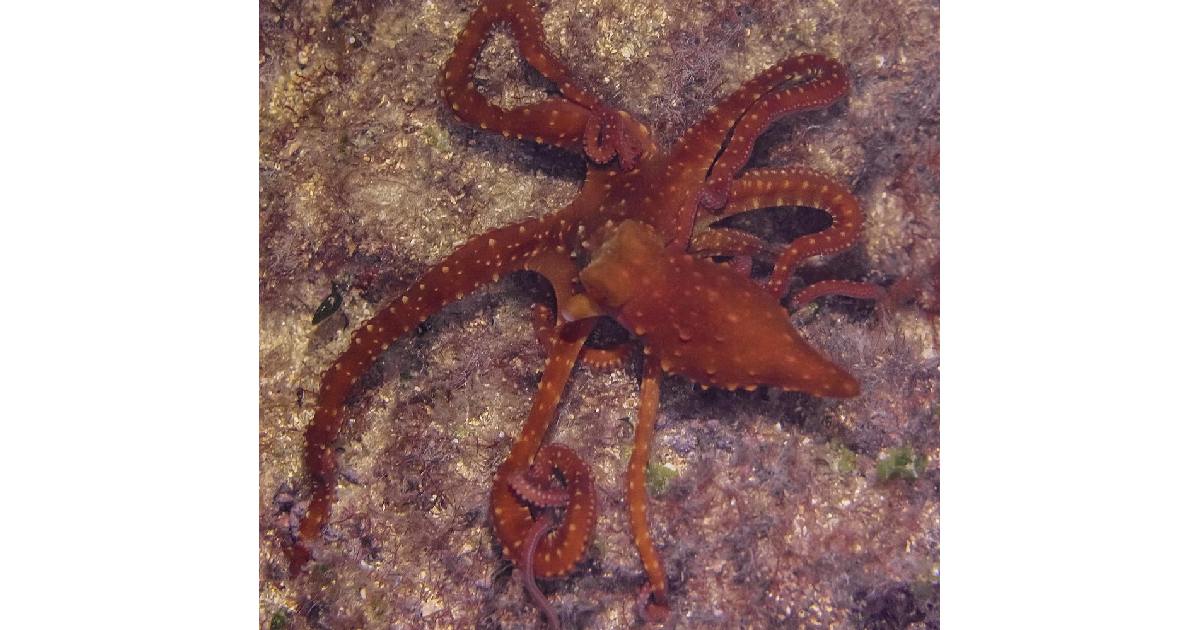
- Location: Western Atlantic Ocean
- Weight: Up to 6.6 pounds (3 kg)
- Key Features: Lives near hydrothermal vents, small and resilient, found in the Atlantic Ocean
Atlantic White Octopuses are delicate creatures that reside in hazardous hydrothermal vent conditions. Given its ability to endure severe temperatures and lack of oxygen, this octopus intrigues exceptional marine biologists. It catches little invertebrates and aquatic creatures regardless of its size.
The Atlantic White Octopus’ existence as an entirely novel marine species is undetermined. Its adaptability to one of Earth’s toughest settings reveals octopus biodiversity and plasticity. Dwelling near hydrothermal vents demonstrates how life may thrive in deadly conditions.
8. Southern Red Octopus (Octopus rubescens)
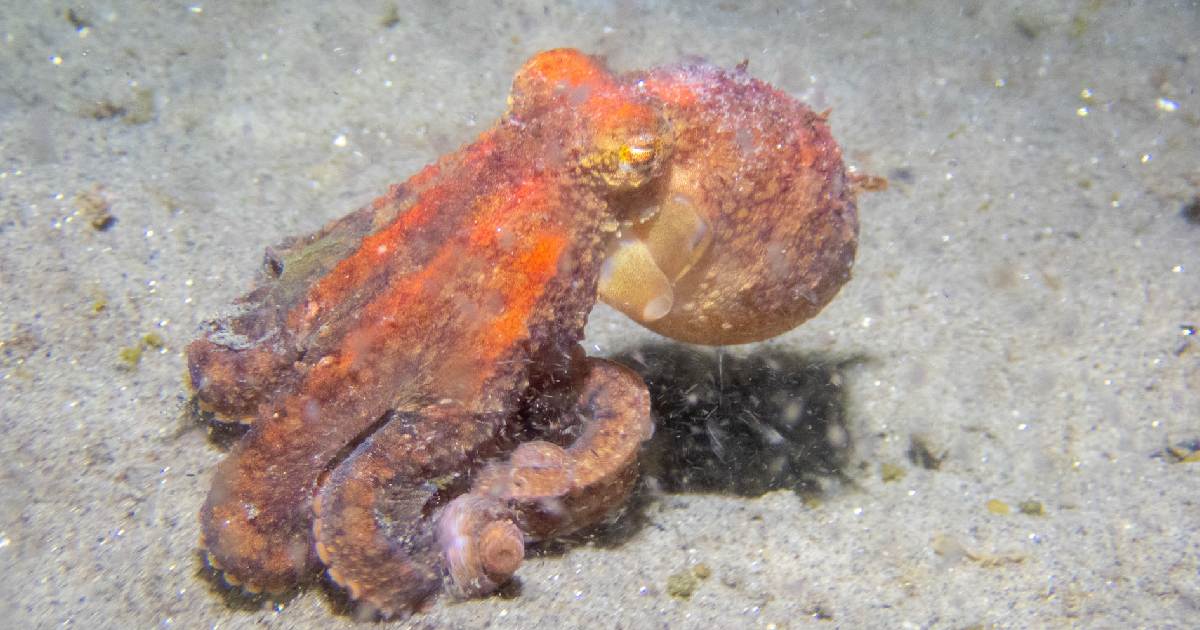
- Location: Pacific coast of North America
- Weight: Up to 2 pounds (0.9 kg)
- Key Features: Bright red coloration, temperate waters habitat, complex camouflage abilities
One of the most prominent octopuses on the Pacific coast of North America is the Southern Red Octopus, known to be mid-sized and red. The excellent disguise of this octopus enables it to hide between rocks and forests of kelp in warm waters. It may shift its appearance and texture to hide from hunters and attack victims.
Their teeth can crack crab, crustacean, and tiny fish shells for Southern Red Octopuses to devour. They live independently in burrows and defend themselves against invaders. Despite their relatively small size, their intelligence and adaptability make them a fascinating study within the octopus family.
7. Yellow Octopus (Enteroctopus zealandicus)
- Location: New Zealand waters
- Weight: Up to 22 pounds (10 kg)
- Key Features: Distinct yellow coloration, aggressive hunter, found in New Zealand waters
Yellow Octopuses are significant New Zealand aquatic creatures. It is effortless to tell this particular octopus species from others since it is bright yellow. Given its vigorous hunting strategy, this octopus consumes crabs, fish, and little sharks. Muscular arms and an acute beak enable them to capture and consume prey.
Yellow Octopuses are intelligent and inquisitive despite their violent nature. They communicate with divers and explore for shelter and food. Their shape, appearance, and behavior make them among the most remarkable Southern Hemisphere Octopuses.
6. Common Octopus (Octopus vulgaris)
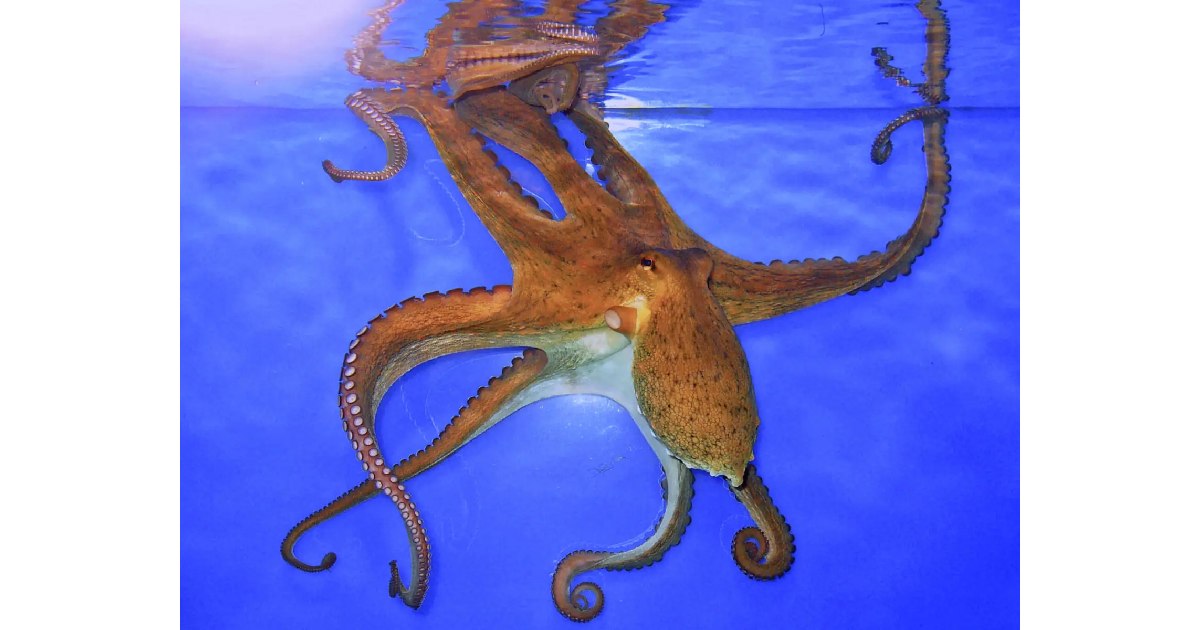
- Location: Worldwide in temperate and tropical oceans
- Weight: Up to 22 pounds (10 kg)
- Key Features: Highly adaptable, found worldwide, known for intelligence and problem-solving abilities
The Common Octopus exists as a widely dispersed and productive octopus. This species thrives in tropical and warm waters globally and is flexible to coral reefs and coastlines. Common Octopuses are sophisticated solution-seekers who use skills and show challenging behaviors.
This species consumes a variety of creatures, such as clams, fish, and crustaceans. Their eight arms and formidable suckers collect and manage food, and their disguise guarantees it blends in. With respect to its adaptability and cognitive ability, marine scientists and supporters are mesmerized by the Common Octopus.
5. Southern Giant Octopus (Enteroctopus magnificus)

- Location: Southern Pacific and Atlantic Oceans
- Weight: Up to 110 pounds (50 kg)
- Key Features: Massive size, lives in temperate waters, voracious predator
In temperate Southern Hemisphere waters, the Southern Giant Octopus ranks one of the biggest octopuses. This octopus is a mighty aquatic hunter at 10 feet and weighing over 100 kilograms. The power and aggression are its trademarks, as it chases crabs, fish, and small sharks.
South Giant Octopuses are timid and hide in rock cavities or underground caves despite their enormous size. Its muscular arms dominate targets, and its keen beak smashes shells and exoskeletons. In the natural world, this species’ size and aggressive powers make them prominent.
4. Maori Octopus (Octopus maorum)
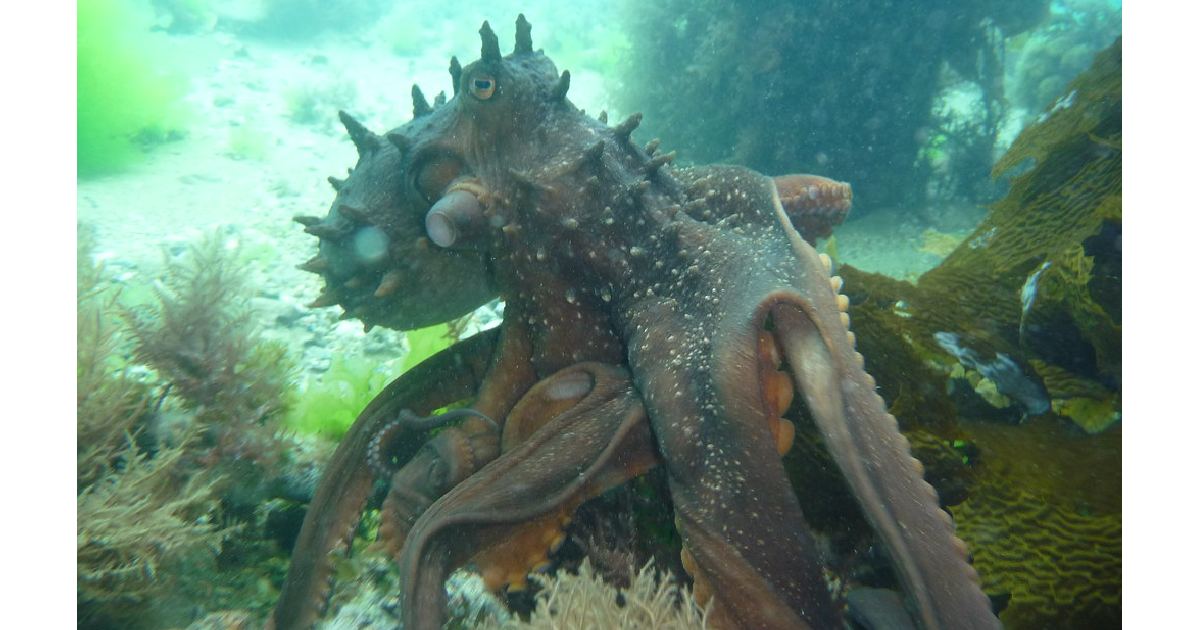
- Location: Waters around New Zealand and southern Australia
- Weight: Up to 150 pounds (68 kg)
- Key Features: High intelligence, strong arms and suckers
Another enormous native to Australia and New Zealand is called the Maori Octopus. Its size and power are infamous, as it can grow to 13 feet and 150 kilograms. It attacks crustaceans and fish with its imposing limbs and suckers.
The clever Maori Octopus defies hooks and evades captivity. It was recently seen doing challenging activities, like breaking jars to get food. Maori Octopuses are attractive and assertive due to their massive stature, strength, and intellectual ability.
3. Frilled Giant Pacific Octopus (Enteroctopus dofleini)
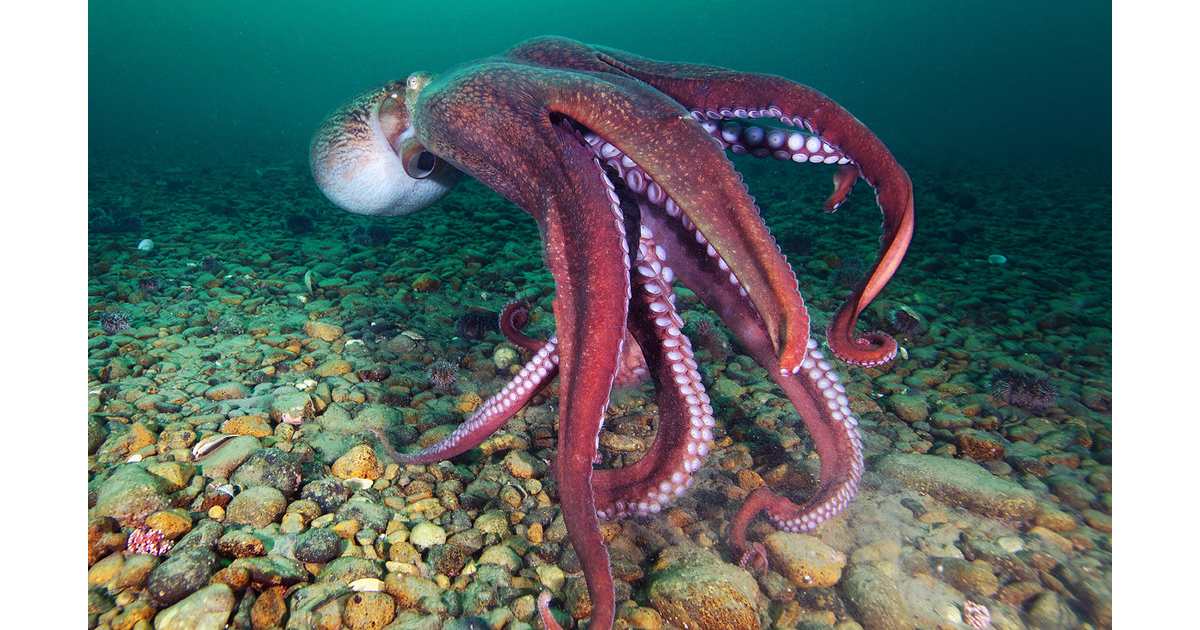
- Location: Northern Pacific Ocean
- Weight: Up to 110 pounds (50 kg)
- Key Features: Distinct frilled appearance, deep-sea habitat, strong predator
The Frilled Giant Pacific Octopus is a unique variant of the giant Pacific octopus, known for the frilled edges on its arms. This species inhabits deeper waters of the Pacific Ocean, often found at depths of over 300 feet. Despite its frilled appearance, it shares many characteristics with the adult giant Pacific octopus, including its size and predatory behavior.
The Frilled Giant Pacific Octopus is a powerful hunter, using its strong arms and suckers to capture a variety of prey, including fish and crustaceans. Its deep-sea habitat makes it less visible to humans, but it plays a crucial role in the marine ecosystem. The frilled appearance and deep-sea adaptations of this octopus make it a unique member of the octopus family.
2. Seven-Arm Octopus (Haliphron atlanticus)

- Location: Atlantic and Pacific Oceans
- Weight: Up to 165 pounds (75 kg)
- Key Features: Appears to have only seven arms, deep-sea habitat, highly elusive
Among the most massive and elusive octopuses is the Seven-Arm Octopus. One of its eight limbs has been tucked underneath its cloak, offering it an appearance of seven. This marine octopus may reach 11 feet and weigh 165 kilograms. It dwells in the Atlantic and Pacific seas, meaning humans rarely encounter them.
The sole Seven-Arm Octopus catches seafood, crabs, fish, and other aquatic creatures. The unknown and curiosity fill its elusiveness and unique appearance. At present, marine-based scientists are investigating its life cycle and behavior.
1. Giant Pacific Octopus (Enteroctopus dofleini)
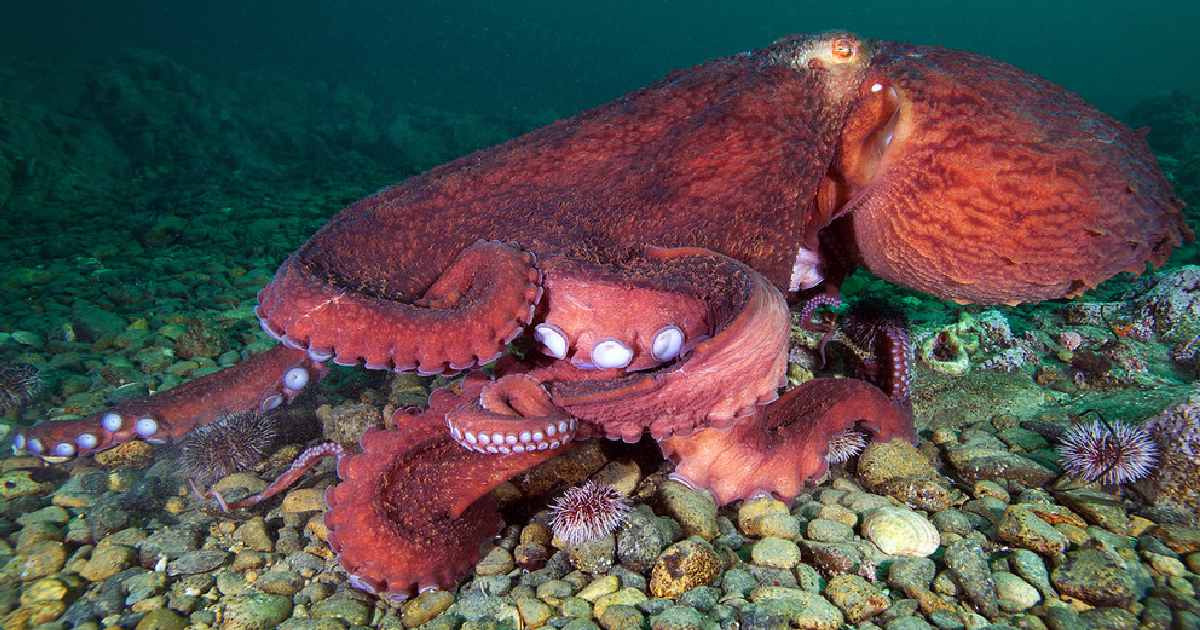
- Location: Northern Pacific Ocean, from Japan to California
- Weight: Up to 150 pounds (68 kg)
- Key Features: Largest octopus species, highly intelligent, long lifespan
The Giant Pacific Octopus, the world’s largest octopus, may weigh 150 kilograms and grow 16 feet. This species, discovered in the chilly, subtropical northern Pacific Ocean, is clever, resilient, and gigantic. As an adult, a Giant Pacific Octopus lives in cracks in rocks and caves, where it hides its food.
The realities of these octopuses are exceptionally difficult, as they can live a maximum of five years. Their varied octopus diets are demonstrated by the fact that they are known to eat sharks, crabs, and fish. They are one of the most remarkable marine life species due to their blue blood, eight arms, and intellect. As elite predators, they assist in maintaining marine ecological equilibrium.
Conclusion
The largest octopus species in the world, from the elusive Seven-Arm Octopus to the mighty Giant Pacific Octopus, showcase the incredible diversity and adaptability of these marine creatures. Their unique features, life histories, and roles in the ocean’s ecosystems highlight the importance of preserving their habitats and understanding their behaviors. As intelligent creatures with complex diets and lifestyles, octopuses continue to captivate our imagination and deepen our appreciation for the wonders of marine life.
Frequently Asked Questions (FAQs)
What is the octopus’s biggest predator?
The biggest predator of octopuses is typically large marine animals like sharks, dolphins, and certain types of fish. However, the Giant Pacific Octopus is known to sometimes fall prey to orcas and even larger species of octopuses. Humans are also significant predators due to fishing and habitat disruption, impacting octopus populations worldwide.
What is the largest octopus species alive but also lives the longest?
The Giant Pacific Octopus (Enteroctopus dofleini) is the largest octopus species alive, capable of reaching up to 150 pounds and spanning up to 16 feet in length. It also has the longest lifespan among octopuses, living up to five years. This species is known for its intelligence, strength, and complex life history, making it a fascinating subject for marine biologists.
What is the strongest octopus species?
The Giant Pacific Octopus is considered the strongest octopus species due to its massive size, powerful arms, and the ability to overpower prey, including sharks and large crustaceans. Its strength allows it to open shells, lift heavy objects, and even escape from enclosures, showcasing its physical capabilities and intelligence.
What is the biggest octopus ever recorded?
The largest octopus ever recorded was a Giant Pacific Octopus, weighing approximately 600 pounds and with an arm span of around 30 feet. This colossal specimen was found in the northern Pacific Ocean, where this species thrives in the cold, temperate waters. Its size and weight highlight the impressive growth potential of this remarkable species.
What is the second largest species of octopus in the world?
The Seven-Arm Octopus (Haliphron atlanticus) is the second largest species of octopus in the world, known to reach weights of up to 165 pounds. Despite its name, it has eight arms, with one hidden under its mantle. This deep-sea species is rarely seen and primarily inhabits the dark depths of the Atlantic and Pacific Oceans.

